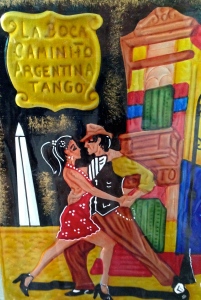 It was time to slow down and brush up on our Spanish. What better place to do that than in Buenos Aires? Buenos Aires is an amazingly vibrant city. A melting pot of European and American culture, adapted with a Latin American twist and its own unique style. We stayed in BA for two weeks and were never bored. There is so much to see and do in the city, and so many amazing foods to try. We took a week of Spanish class and rented a flat through Airbnb, which made the city feel more like home. The class was pretty rigorous (5 hours of Spanish per day) but really helpful to get us back into the language. There’s so much we could talk about, so we decided to sum it up with our top 10 things that we feel define Argentina below. Enjoy!
It was time to slow down and brush up on our Spanish. What better place to do that than in Buenos Aires? Buenos Aires is an amazingly vibrant city. A melting pot of European and American culture, adapted with a Latin American twist and its own unique style. We stayed in BA for two weeks and were never bored. There is so much to see and do in the city, and so many amazing foods to try. We took a week of Spanish class and rented a flat through Airbnb, which made the city feel more like home. The class was pretty rigorous (5 hours of Spanish per day) but really helpful to get us back into the language. There’s so much we could talk about, so we decided to sum it up with our top 10 things that we feel define Argentina below. Enjoy!
1. Dolar Blue
 “Cambio, Cambio,” people murmur as you walk past them down the bustling streets of Buenos Aires. This is Argentina’s Black Market for US Dollars known as the ‘Dolar Blue.’ Argentine Peso’s are no longer trusted due to their lack of stability caused from staggering inflation rates in the country, so they want to buy US Dollars off tourists, and will do so at a much better rate than market value. Read our previous post for more details.
“Cambio, Cambio,” people murmur as you walk past them down the bustling streets of Buenos Aires. This is Argentina’s Black Market for US Dollars known as the ‘Dolar Blue.’ Argentine Peso’s are no longer trusted due to their lack of stability caused from staggering inflation rates in the country, so they want to buy US Dollars off tourists, and will do so at a much better rate than market value. Read our previous post for more details.
2. Architecture Clash
When you look around at the buildings in Buenos Aires, you might be confused. They are an eclectic mash-up of various different styles and time periods, all sitting right next to each other. Many buildings are European replicas from Spain, France and Italy, but there are also modern influences. As you walk down the street you might see a neoclassical style building next to a modern skyscraper. You might walk through a neighborhood and think you went back in time to 18th century Paris because of the French infused architecture, then turn the corner to find a series of art deco apartment buildings, right next to a Baroque style church. Something looking 300 years old might actually only be 50, sitting next to a modern façade built five years ago; no rhyme or reason to its placement. Why the melting pot of styles? When Argentina declared its independence in 1816 it rejected its old colonial style, and architects used influences from all over the world to build the city’s most marvelous structures. We found it really interesting looking at the different style buildings and guessing where each would fit around the world.
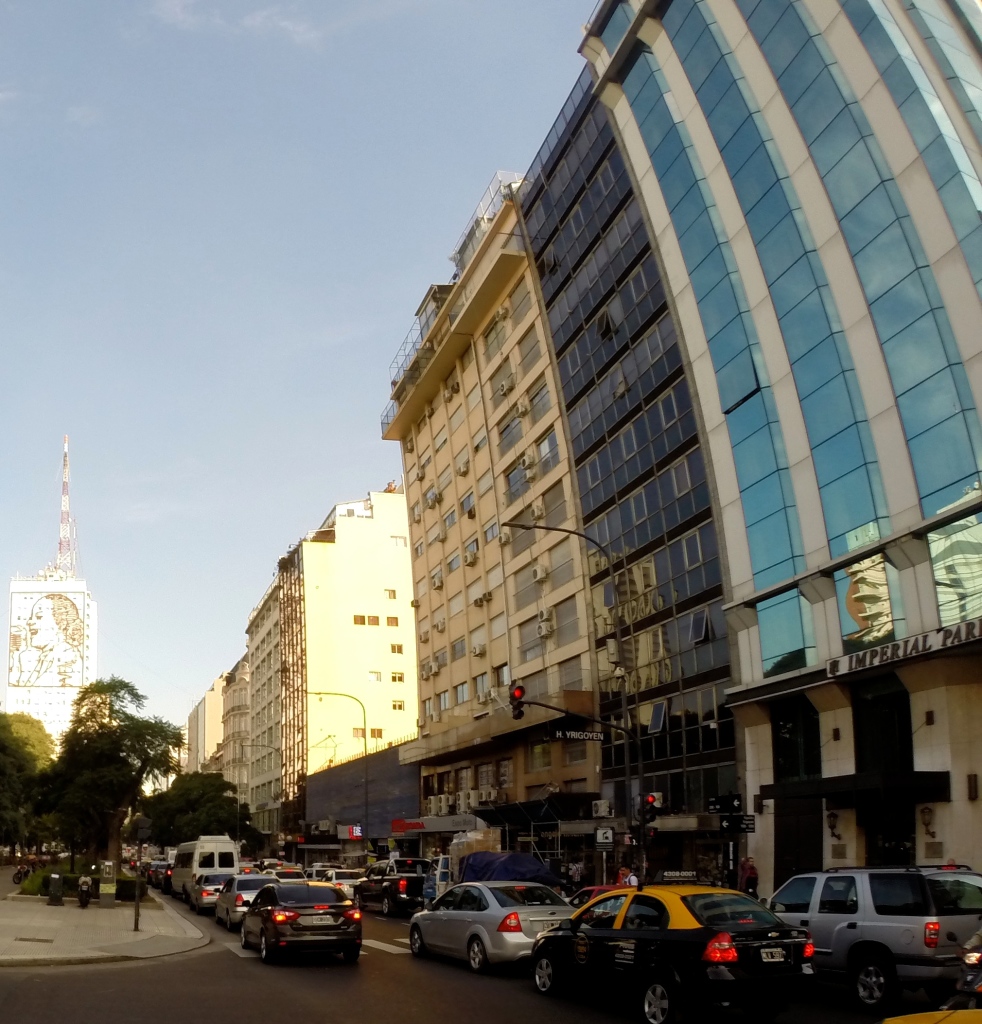
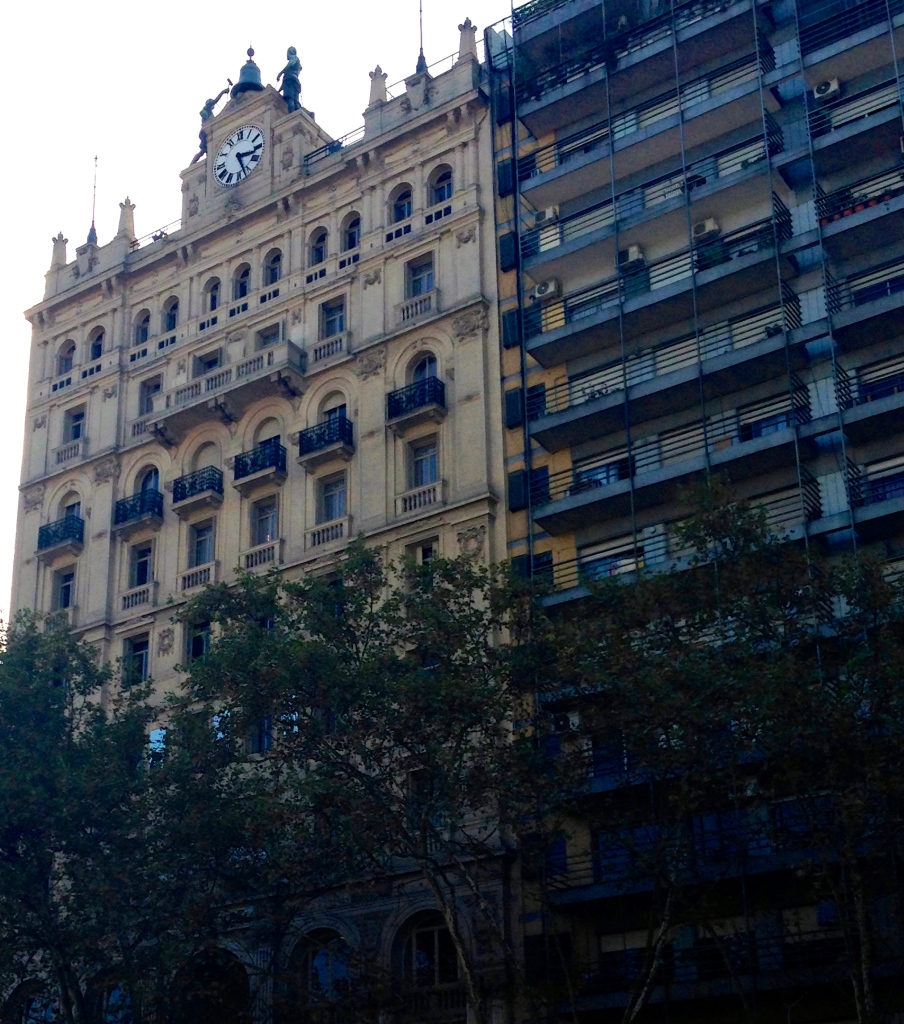
3. Dog Walkers
 If you live in Buenos Aires and have a dog, no need to fret! There is a dog walker near you, who can walk your dog (and 10-12 others simultaneously) while you’re at work for the day. We were absolutely astounded by how many dog walkers filled the streets of Buenos Aires during the week. As we walked, we’d see hundreds of men and women being pulled along the sidewalk with ten or more leashed dogs leading their way. They were all heading for the parks, which were a jackpot for dogs! We’d go running in the park, and everywhere we saw a green space, it was occupied by large groups of dogs running around in fenced off sections of the park, with their walker sitting a bench close by, reading a book or looking at their phone. The most we saw with one man was 14! I don’t know how they control all those dogs, but they appeared trained, and didn’t even bark at us as we went by them.
If you live in Buenos Aires and have a dog, no need to fret! There is a dog walker near you, who can walk your dog (and 10-12 others simultaneously) while you’re at work for the day. We were absolutely astounded by how many dog walkers filled the streets of Buenos Aires during the week. As we walked, we’d see hundreds of men and women being pulled along the sidewalk with ten or more leashed dogs leading their way. They were all heading for the parks, which were a jackpot for dogs! We’d go running in the park, and everywhere we saw a green space, it was occupied by large groups of dogs running around in fenced off sections of the park, with their walker sitting a bench close by, reading a book or looking at their phone. The most we saw with one man was 14! I don’t know how they control all those dogs, but they appeared trained, and didn’t even bark at us as we went by them.
4. La Merienda: Mate and Dulce de Leche
I thought we ate dinner late in the evening, until I came to Buenos Aires. We typically eat between 7 and 8pm, but locals here typically eat dinner between 9:30 or 10pm each night! We kept wondering, how on earth are they not all starving? Then our Spanish teacher let us in on the secret. La merienda is how, the Argentine fourth meal of the day. Argentine people typically eat lunch around the same time we do back home, then have la merienda around 6 p.m. which tides them over until dinner. Typically people eat something light and sweet like pastries, many of which contain the delicious dulce de leche. They also consume a lot of Mate.
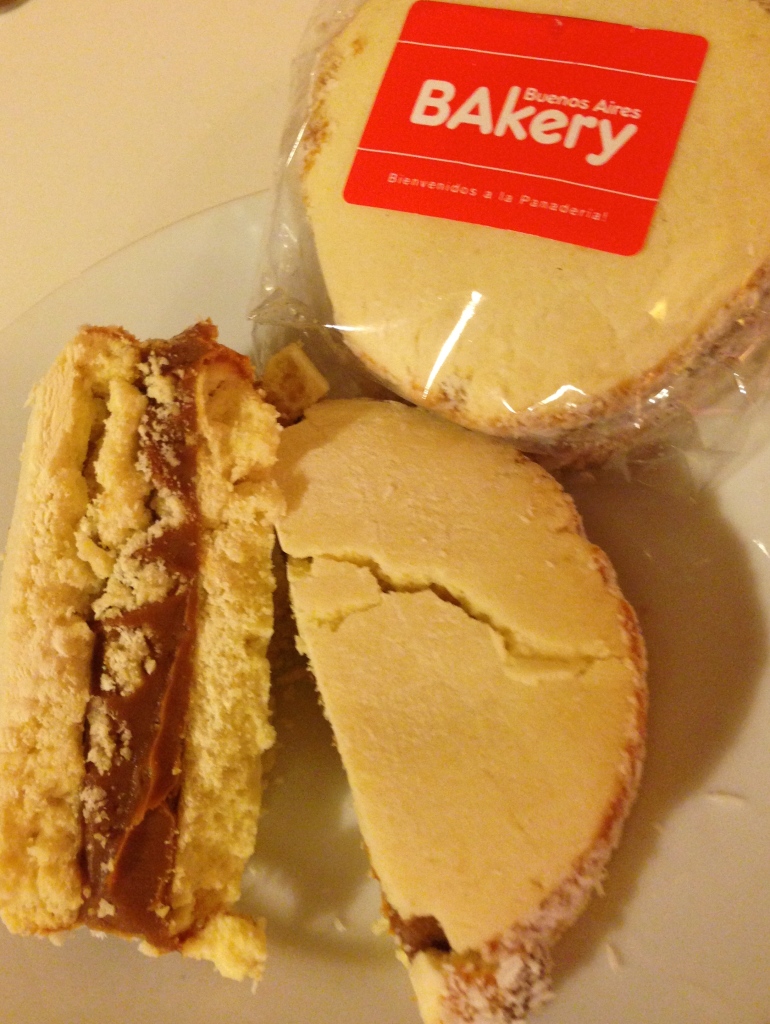
Dulce de Leche- We had this sweet treat for the first time in Chile and it has been following us around South America, which I am very glad about! When I first tried it, I thought it was homemade caramel- it has a very similar texture and taste. But dulce de leche is made from condensed milk and sugar, whereas caramel is made from sugar and water. It is a popular staple in Argentina, and nearly all the pastries and desserts contain dulce de leche. My favorite was the alfajor, made of two soft and crumbly cookies sandwiched around the luscious dulce de leche.
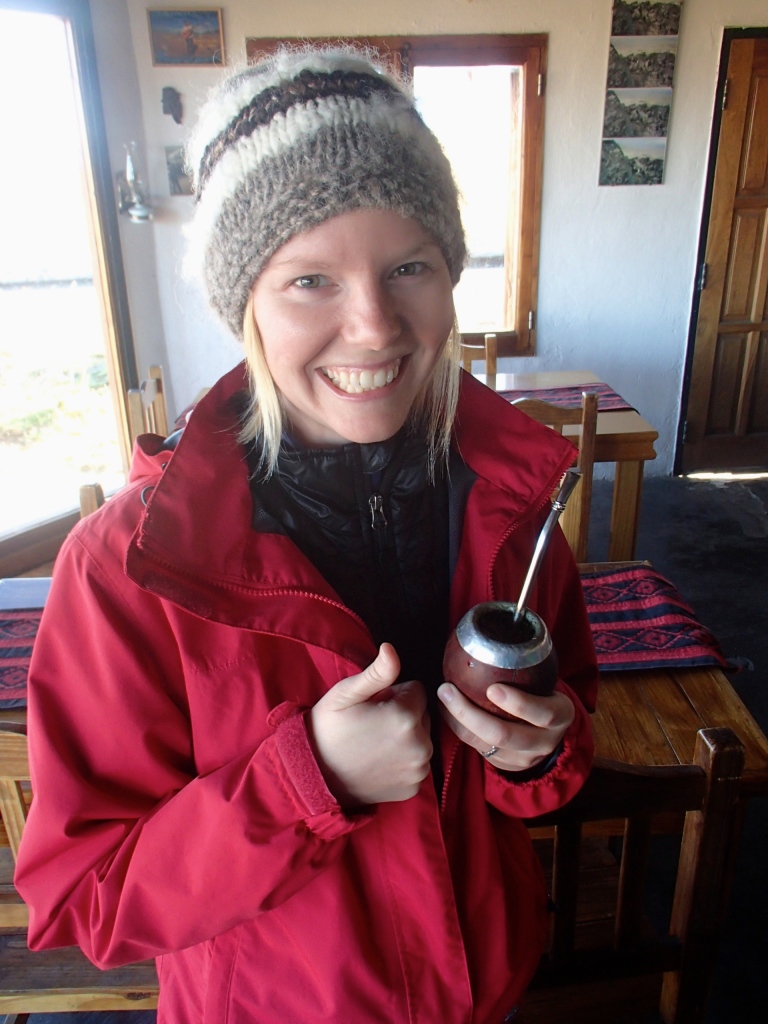
Mate- Argentina’s national drink. Yerba Mate is a native South American tea, which has been drank by their people for ages. It has a bitter, earthy taste to it, but is known for its numerous health benefits and giving a caffeine buzz without the jitters. It seems that everyone in BA drinks Mate all throughout the day, but especially around merienda. To properly drink it, you need four things: yerba mate tea, a mate cup (typically a made from a gourd), a bombilla (a metal straw), and hot water. Mate seems to be very social drink. Everywhere you look you’ll find people drinking mate, but the most common thing seems to be having your own hot water thermos that you carry with you throughout the day, and whenever you need some mate, you simply get out your cup and straw, pour in the hot water, and you’re set!
5. Parrillas: Steak & Wine
One of our favorite past times in BA was indulging in their amazing cuisine. The parrillas (steakhouses) were top notch, and endless. We tried numerous different parrillas, sharing platters filled with large slabs of juicy beef, paired with our favorite Malbec wines, all for an incredibly reasonable price (thank you Dolar Blue). To try a lot of the traditional Argentine meats you can order a ‘parrilla for two’ which gives you a platter of various meats including sirloin steak, tenderloin, chorizo, chinchulines (cow intestines), beef ribs, and chimichurri sauce. We ordered this a couple times and it was way too much food for two, but an excellent way to see what you like best. The toughest part was waiting for restaurants to open back up for the late night dinner, starting around 9:30.

At one of the best Parrillas we went to in Buenos Aires, Don Julios
6. Tango
People say Buenos Aires IS Ta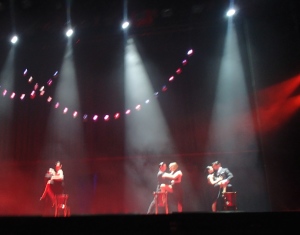 ngo; and that Tango is what defines Buenos Aires. Being the birthplace of this sultry, complex dance, it definitely felt true. Josh and I are not great dancers but we wanted to see what it was all about. We went to a traditional tango show, and also went to a milonga, which is a smaller more informal setting. The shows are considered touristy and not as authentic as the milongas, but we really enjoyed both aspects of the dance, to get a feel for what it stood for. We were in awe of how great the dancers were, and how simple they made something feel that was so complex.
ngo; and that Tango is what defines Buenos Aires. Being the birthplace of this sultry, complex dance, it definitely felt true. Josh and I are not great dancers but we wanted to see what it was all about. We went to a traditional tango show, and also went to a milonga, which is a smaller more informal setting. The shows are considered touristy and not as authentic as the milongas, but we really enjoyed both aspects of the dance, to get a feel for what it stood for. We were in awe of how great the dancers were, and how simple they made something feel that was so complex.
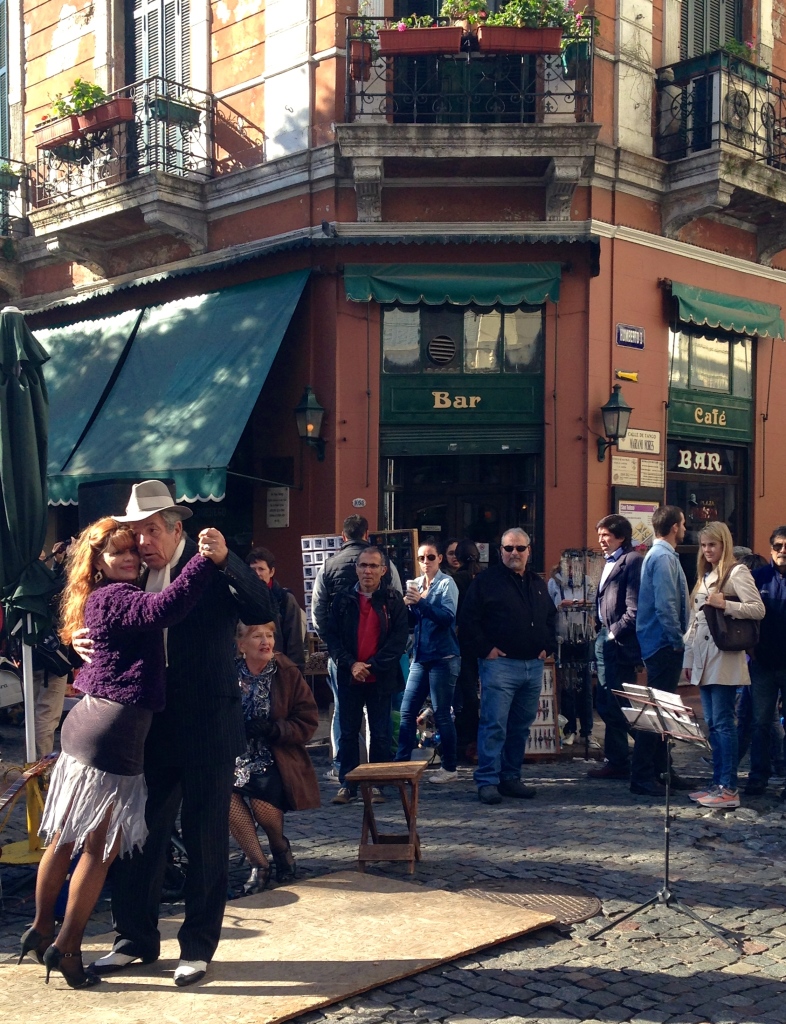
7. Platform Shoes
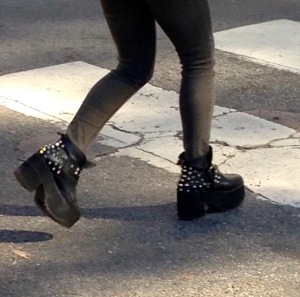 In Buenos Aires, fashion is paramount. The Portenos (people from BA) have their own fashion stores, fashion week, and trends that are unconcerned with American or European style. And in Buenos Aires, platforms are BACK in full force! Everywhere we looked we passed women sporting the platforms of 2-6 inches, whether casual shoes or fancy. Some rocked them, while others struggled walking on the streets without tripping. I was fascinated by this, and remember when I had some shoes of similar style years ago. I really hope these don’t come back into fashion in the states, because I cold not walk in these!
In Buenos Aires, fashion is paramount. The Portenos (people from BA) have their own fashion stores, fashion week, and trends that are unconcerned with American or European style. And in Buenos Aires, platforms are BACK in full force! Everywhere we looked we passed women sporting the platforms of 2-6 inches, whether casual shoes or fancy. Some rocked them, while others struggled walking on the streets without tripping. I was fascinated by this, and remember when I had some shoes of similar style years ago. I really hope these don’t come back into fashion in the states, because I cold not walk in these!
8. San Telmo Market
If its Sunday afternoon head to the Plaza Dorrengo in San Telmo, and you will find the massive antiques market, which spills out for what seems like miles into the Plaza’s neighboring streets. The market draws in over 12,000 people per week, and has stalls filled with everything you could ever hope to find. It began in 1971 primarily for antiques, but you can find crafts of every sort, musicians, tango dancers, and homemade sweets and treats to your hearts content. We wandered for hours down Defensa Street, and got lost in the buzz of the thousands of people. If you need a new mate gourd and straw, this is the perfect place to get one for a bargain!
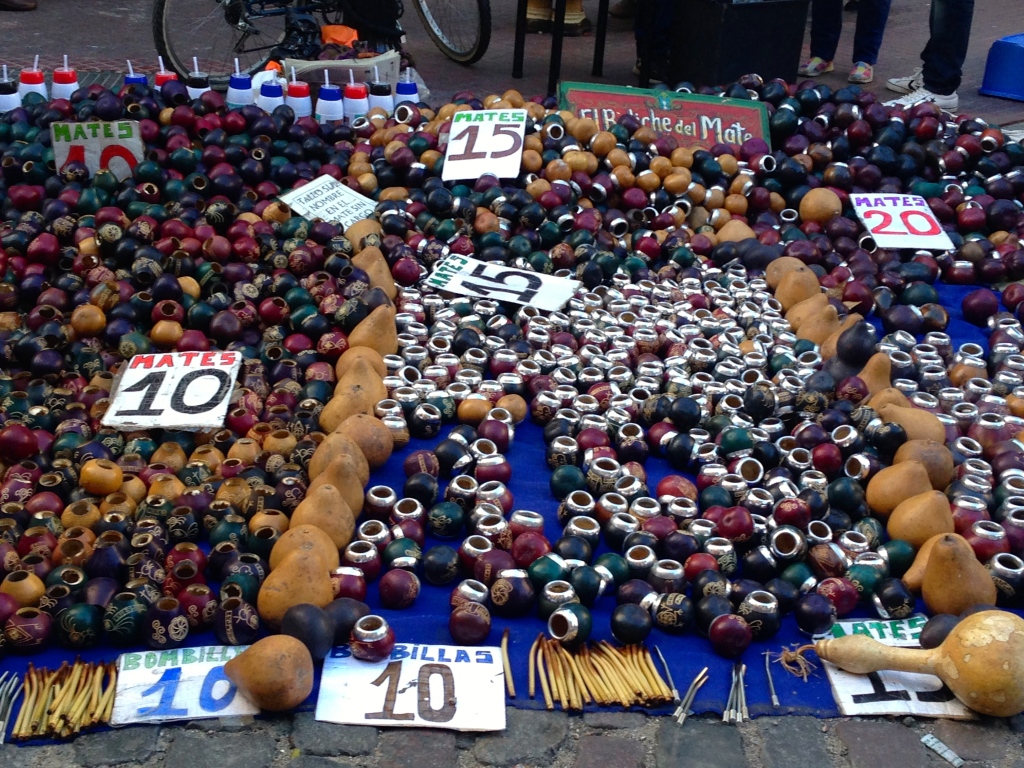
9. Italian Influence (Ice Cream)
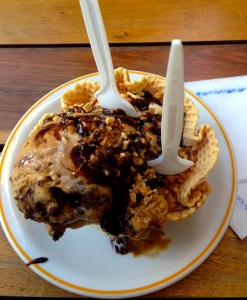 When Argentina’s agricultural industry began booming, the immigration into the country also grew rapidly. From 1857 to 1940 Italians came into Argentina in droves, totaling to 45% of the population, which was more than any other country. This migratory flow continued and Italian descent today is 60% of the population. While the Spanish colonized Argentina, the Italians had a huge influence over many areas of Argentine life, such as fashion, language, and food. Food is an area you see this in BA today, and one that we took advantage of. There is pasta, pizza, and heldao (ice cream) everywhere in the city, and it was delicious. My favorite was definitely the helado! It was like Italian gelato but mixed with dulce de leche and other flavors, in a fashion you wouldn’t typically find in Italy.
When Argentina’s agricultural industry began booming, the immigration into the country also grew rapidly. From 1857 to 1940 Italians came into Argentina in droves, totaling to 45% of the population, which was more than any other country. This migratory flow continued and Italian descent today is 60% of the population. While the Spanish colonized Argentina, the Italians had a huge influence over many areas of Argentine life, such as fashion, language, and food. Food is an area you see this in BA today, and one that we took advantage of. There is pasta, pizza, and heldao (ice cream) everywhere in the city, and it was delicious. My favorite was definitely the helado! It was like Italian gelato but mixed with dulce de leche and other flavors, in a fashion you wouldn’t typically find in Italy.
10. Religion: The Pope & Recoleta Cemetery
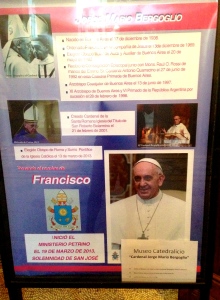 Religion is a very important part of Argentina, and has played a huge role in BA. Argentina has always been an overwhelmingly Catholic country, so it was no surprise when tears of pride were shed as their very own Pope Francis was inaugurated in March 2013. Pope Francis made history for Buenos Aires, as the first Latin American Pope, and the first Jesuit to lead the Roman Catholic Church. We visited the church Pope Francis used to lead. Josh even got his haircut at a small, unassuming barbershop nearby the church which used to cut the Pope’s hair!
Religion is a very important part of Argentina, and has played a huge role in BA. Argentina has always been an overwhelmingly Catholic country, so it was no surprise when tears of pride were shed as their very own Pope Francis was inaugurated in March 2013. Pope Francis made history for Buenos Aires, as the first Latin American Pope, and the first Jesuit to lead the Roman Catholic Church. We visited the church Pope Francis used to lead. Josh even got his haircut at a small, unassuming barbershop nearby the church which used to cut the Pope’s hair!
One of the most iconic places to visit in Buenos Aires is the Recoleta Cemetery. Founded in 1822, this cemetery was originally created outside BA’s city limits and is home to many of the wealthiest and important figures of Argentine history, including Eva ‘Evita’ Peron. The cemetery covers 4 city blocks and is the oldest in Buenos Aires. It holds over 6,000 mausoleums, all from different ages and styles. Some are brand new and in pristine condition, while others are older with their foundations crumbling. It is a very eerie and interesting place to explore and we did an English tour through the cemetery to find out more about the graves.
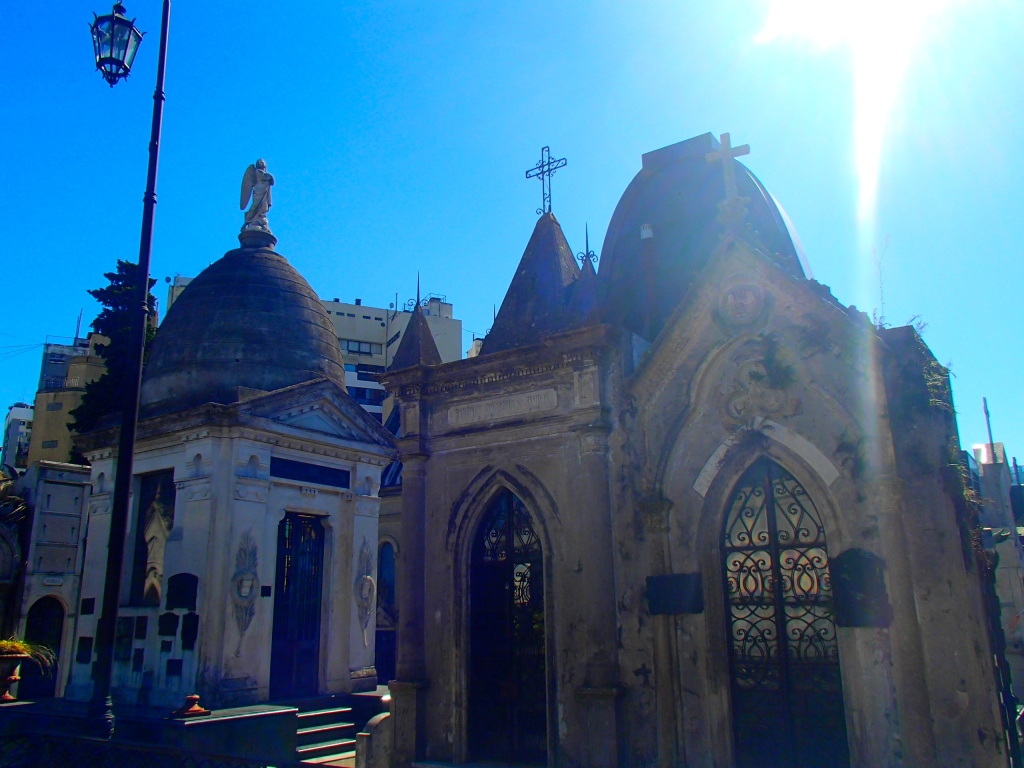


It all sounds awesome but i really want to try the dulce de leche!!
yes! It is sooo delish!